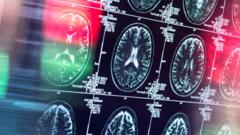MICE: Mentale Zorg bij EpilepsieMentale gezondheidsproblemen komen vaak voor bij kinderen en jongeren met chronische gezondheidsproblemen, maar velen van hen krijgen geen toegang tot op bewijs gebaseerde psychologische behandelingen. Epilepsie is een veelvoorkomende chronische aandoening die bekend staat om een bijzonder hoog percentage samengaande mentale gezondheidsproblemen. Het doel van de studie was om de klinische effectiviteit van geïntegreerde mentale […]


